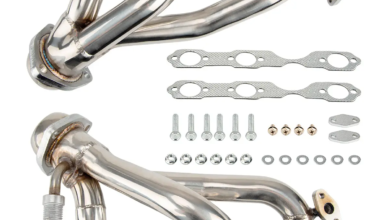Responsive Web Design: Delivering a Seamless User Experience

Users access websites through desktops along with tablets and smartphones because of Internet availability. A site maintains smooth functionality across all devices through responsive web design (RWD). RWD enables companies to improve user engagement while reducing site abandonment and thus enhancing the total web presence.
Understanding Responsive Web Design
The method known as responsive web design enables proper rendering of web pages across multiple screen dimensions and orientations. Web Design Albany frequently applies this method by implementing flexible grids where dynamic design and content variables can be adjusted using media queries. Regardless of users’ devices, they always get the same visually outstanding experience through this approach.
Key Elements of Responsive Web Design
1. Flexible Grid Layouts
A flexible grid design employs relative units such as percent instead of absolute units such as pixels. This ensures that the elements scale relative to the screen resolution, providing a proportional and visually appealing design.
2. Fluid Images and Media
Images and media files should be flexible enough to fit any screen size without distortion. The use of CSS attributes such as max-width: 100% guarantees that images will scale properly and keep their aspect ratio.
3. Media Queries
Media queries are an integral part of RWD. They enable the developer to utilize specific styles based on the device parameters of the user, such as the resolution and the screen width. This ensures the optimal presentation and operation in any device.
4. Mobile-First Approach
A mobile-first strategy includes the design of smaller screens and working outward toward larger devices. The strategy ensures that the vital content and features will be accessible to the users of smaller devices that make a large majority of web traffic.
Benefits of Responsive Web Design
1. Enhanced User Experience
A responsive site provides a smooth and easy experience of web surfing. The site becomes easy enough that it does not need a lot of zooming and scrolling and this leads to higher customer satisfaction and engagement.
2. Improved SEO Rankings
Search engines like Google prioritize mobile-friendly websites. A responsive design improves SEO performance, helping websites rank higher in search results and attract more organic traffic. SEO Albany strategies emphasize the importance of mobile responsiveness as a key factor in boosting visibility and driving sustainable online growth.
3. Cost-Effectiveness
It is economical to maintain a single responsive site instead of developing multiple desktop and mobile variants. This saves development effort and time and cuts the overall cost.
4. Increased Conversion Rates
Seamless browsing leads to higher rates of conversion. Users will be willing to stay within a site and peruse the site’s offerings and take the course of preference such as making a purchase or registering with a site.
Real-Life Case Study: Starbucks
Starbucks implemented responsive web design for online use across the world. People who used different devices encountered problems due to variable user experiences when accessing Starbucks. The combination of mobile-first development with flexible grids plus image optimization enabled Starbucks to create better websites that performed faster for users. Mobile sales numbers increased by 15% after Starbucks implemented mobile-friendly web alignment which also led to increased mobile user connection. The company’s achievement demonstrates why responsive design requires attention because it creates a unified digital environment for users.
Implementing Responsive Web Design: Best Practices
1. Prioritize Readability
Use readable fonts, the appropriate sizes of fonts, and sufficient line space so the material will be readable on any device.
2. Optimize Images and Videos
Compress images and use image file types that enable images to be loaded quicker. Adopt video players that will maintain the correct proportions at any screen resolution.
3. Simplify Navigation
A clean and user-friendly navigation menu improves accessibility. Consider using a collapsible menu or hamburger icon for mobile users.
4. Test Across Devices
Test the site routinely with varied devices and screen sizes to recognize any issues and adjust the site accordingly for better performance.
Conclusion
The smooth experience on any device depends heavily on having responsive web design implementation. Companies achieve site retailer expansion and SEO score elevation through three methods: flexible layouts and liquid images plus media queries. A responsive design investment generates enduring achievement because of internet world progress.
FAQs
1. Why is responsive web design important?
Responsive web design ensures that websites function correctly on all devices, improving user experience, search rankings, and overall engagement.
2. How does responsive web design impact SEO?
Google favors mobile-optimized websites in the results of a search. A responsive design helps optimize SEO because it delivers better user experience alongside faster page speeds that decrease visitor dropouts.
3. What is the difference between responsive and adaptive web design?
Responsive web design uses flexible layouts and liquid elements that dynamically adjust, while adaptive design relies on predefined screen sizes and loads alternate layouts based on the device.




